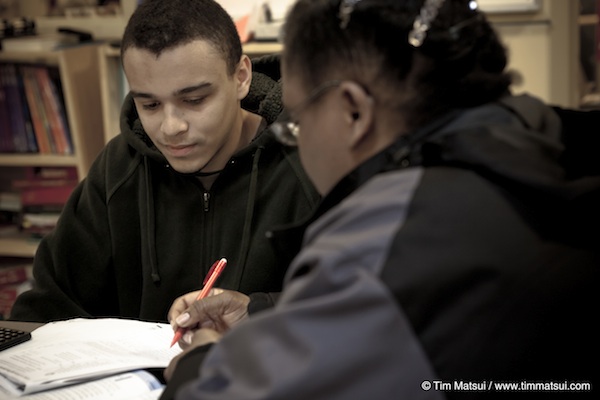What’s the best way to learn about complex social issues like poverty and family homelessness? Guest blogger Lisa Gustaveson, Seattle University's Faith & Family Homelessness Program Manager, has been working with faith communities in King, Pierce and Snohomish counties to answer this question. Among their strategies is a simulation exercise. Read on to learn how Poverty Immersion Workshops can help people more deeply understand and take action to stop the cycle of generational poverty and homelessness.
Monthly Archives: September 2013
Stories of Two Immigrant Families
Culture Watch: “Inocente”: A Young Artist’s Journey Through Homelessness
Back to School: “No One Would Have Known I Was Homeless”
Back to School: Flexible Diploma and GED Programs Open Doors for Homeless Youth
A YouthCare client works toward his GED. High school completion and GED programs designed for homeless youth must focus on individual students' needs and goals. Photo courtesy YouthCare.
27,390. We've been sharing that number a lot this week because it's how many students in Washington state have been identified as homeless. What that number doesn't include is the thousands of young people who have left the school system because of homelessness. If they never find their way back to school, they are likely to become trapped in the cycle of poverty and homelessness. Melinda Giovengo, YouthCare's executive director, writes today's guest post about how flexible high school completion and GED programs can help homeless young people find a path to post-secondary education and successful careers.
